MARKETING
Elevate Your YouTube Channel: Top 4 Video Editing Tools


Launched in 2005, YouTube now stands as the second largest search engine after Google.
Almost 2.7 billion people use YouTube worldwide every month and 87.7% of those users access it on their mobile phones.
Owing to the large number of video content available on the platform, you want to ensure that yours stands out.
To make it happen, you need to master effective content creation tips, use fantastic lighting, and invest in powerful video editing software.
There are tons of editing tools on the market that promise amazing results.
To help you cut through the noise, I’ve curated a list of the 4 best YouTube video editing software.
Whether you’re a beginner or a pro, there’s something for you. Keep reading.
1. Movavi Video Editor
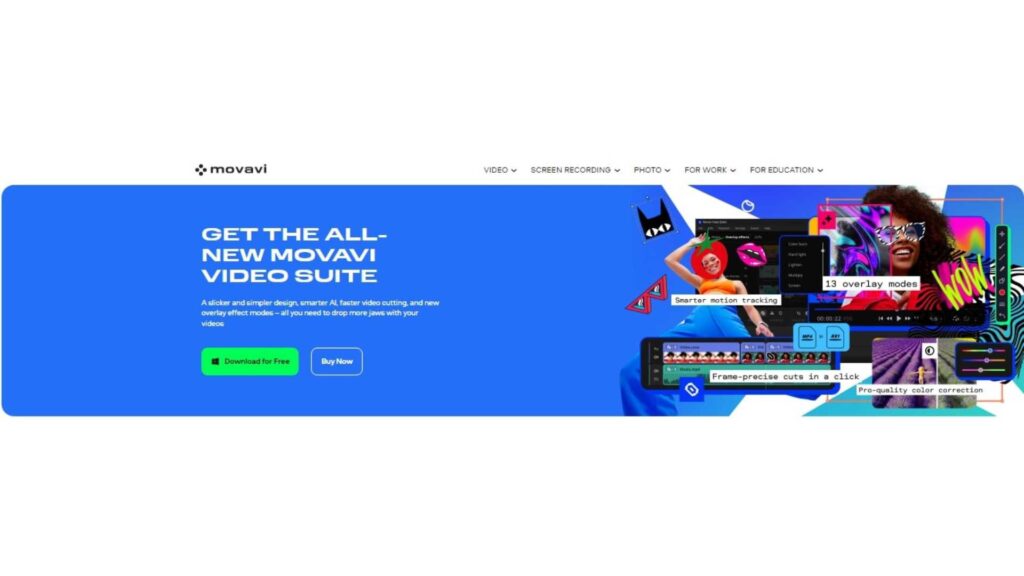

Top on the list is the Movavi Video Editor, one of the best YouTube video editing software for beginners.
It enables you to create compelling videos using advanced tools like audio correction, motion tracking, and chroma key without requiring any technical knowledge.
Additionally, you’ll find several ready-made YouTube intro videos and a large library of background music and audio clips.
Although the user interface is easy to navigate, Movavi still provides video tutorials to make you feel confident while editing.
Movavi runs on Windows (versions 7 to 11) and Mac OS X (10.15 or higher).
Key Features
- AI background remover: Replaces backgrounds without a green screen
- AI motion tracker: Sticks effects and images on moving objects
- Precise frame cuts: Makes cuts with precision and attention-grabbing montages in one click
- Color correction: Boosts colors so viewers can stay glued to your YouTube channel
- Overlay effect: Offers 13 blending modes to create professional-looking videos
- 4k resolution: Saves videos in ultra-high quality form
- YouTube Integration: Saves you time by sharing videos directly to YouTube
Pricing
Movavi offers a generous free plan and three paid plans with different sets of features. Here are the prices for various plans it offers:
- Free
- Video Editor: $49.95/year
- Video Editor + Effect Packs: $155.95/year
- Video Suite + Effect Packs: $94.95/year
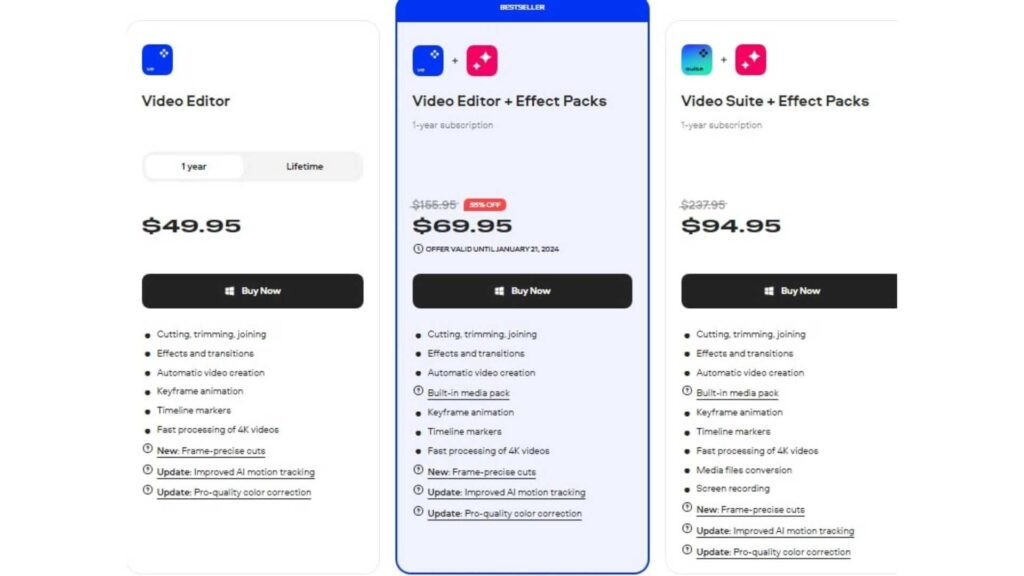

Usability
Easy to use
Tool Level
Beginner/Intermediate
2. Adobe Premiere Pro
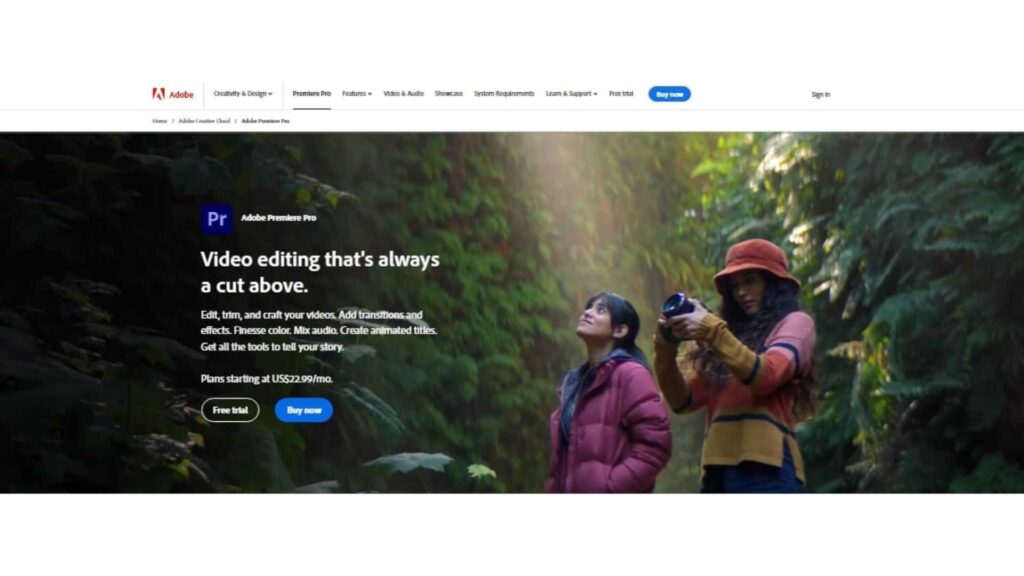

If you’re looking for the best YouTube video editing software that can transform a basic clip into a ready-to-upload video, Adobe Premiere Pro is your best bet.
It integrates with all the apps in Adobe Creative Cloud to help you streamline your workflow.
Adobe Premiere Pro boasts an extensive range of features, from color correction tools and visual effects to collaboration tools for teams.
Also, you can optimize the export settings to preserve the quality of your YouTube videos when you share them online.
Although Premiere Pro is popular among professional video editors, follow the video steps for beginners provided on the platform to learn how to use it. All you need is a powerful computer and willingness to study the available tutorials.
The app is compatible with Windows (10 or later) and macOS Monterey (version 12 or later).
Key Features
- Text-based editing: Removes pauses with ease
- Project templates: Retains assets, colors, and branding across multiple projects
- Speech-to-text conversion: Automatically creates captions and transcripts in over 18 languages
- Auto reframe: Automatically detects and adjusts aspect ratios to easily upload videos to YouTube
- Adobe stock library: Offers access to stock video footage, photos, and over 75,000 audio tracks and remix the length to fit your video
Pricing
Adobe Premier Pro offers two paid plans. Here are the details:
- Premiere Pro: $29.99/month
- Creative Cloud All Apps: $59.99/month
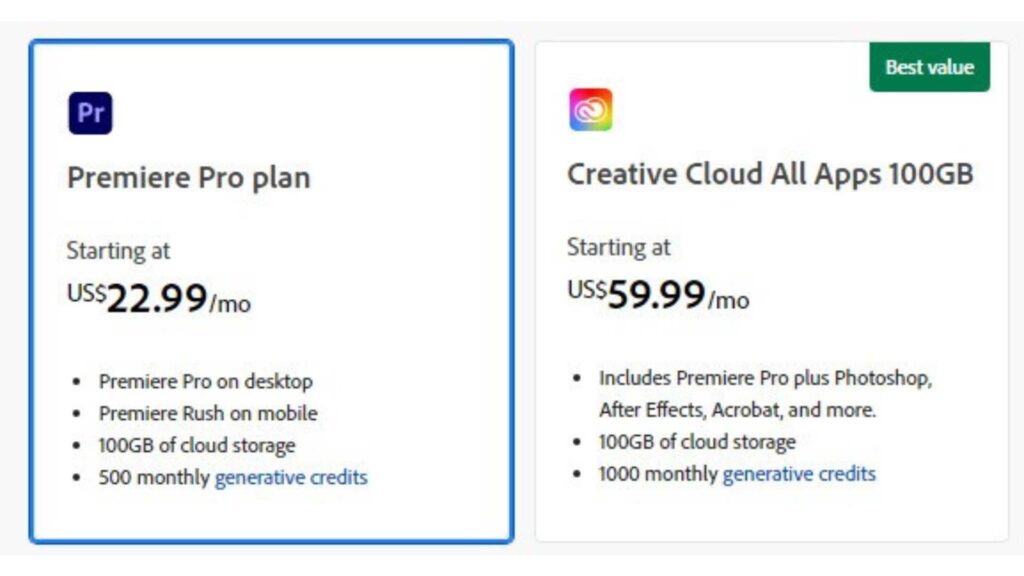

Usability
Has a steep learning curve
Tool Level
Intermediate/Advanced
3. Shotcut
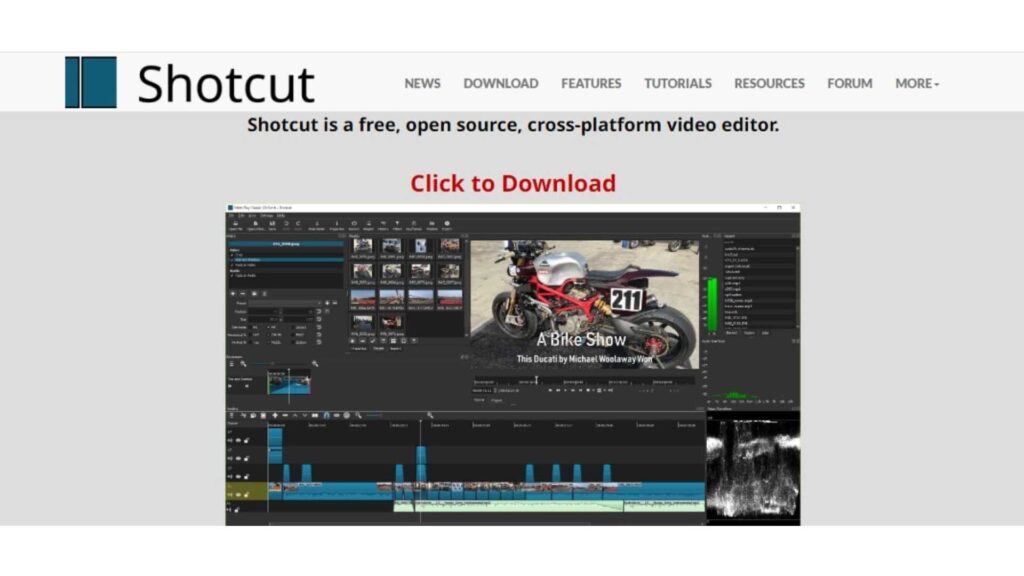

Available on Linux, Windows, and macOS, Shotcut is a comprehensive YouTube video editing software solution.
It supports various video and audio files, including AVI, WAV, and MP4.
The video editing software is great for complex projects as it allows you to combine several audio, image, and video files into one video.
Also, editing on the platform doesn’t follow a chronological order; you can make changes at any point.
Shotcut may not be the best editing tool for new content creators because of the learning curve.
However, the platform has a video editing guide, including a community of Shotcut users who are willing to assist you.
Key Features
- Native timeline editing: Supports all video and audio formats, including 4k and 8k resolutions
- Cross-platform editing: Gives you the option to start a project on macOS and switch to Windows without hassles
- Video effects: Offers built-in effects like auto-rotate, white balancing, timeline fader, and 360° video filters, without installing any plugins
- Display and monitoring: Ability to preview videos in low resolution to improve the speed of real-time effects
- Keyframing: Option to define the start and finish points of effects along the video timeline such as transition, sound, and brightness or contrast
Pricing
Shotcut is completely free to use as it’s an open-source software solution
Usability
It has a steep learning curve
Tool Level
Intermediate
4. Lightworks


If you’re looking to create the best videos in a short time, Lightworks is the way to go.
It’s the best YouTube video editing software for beginners who are willing to learn video editing as they grow their YouTube channels.
Similar to Shotcut, the platform is loaded with all the tools you need to go from a beginner to a pro.
You can edit, color correct, add titles, and more using the drag-and-drop interface.
Also, it’s compatible with YouTube video format and resolution for ease of uploading content.
All versions of Lightworks can work on Windows (8 and later), macOS (10.14 and later), and Linux.
Key Features
- Universal timeline: Accommodates video footage of any quality, size, or frame rate
- Flawless audio editing: Offers various audio effects and the option to sync with video for an immersive experience
- Visual effects: Offers a simplified suite of over 700 customizable motion graphics and titles for easy to advanced editing
- Easy export and share: Allows you to share videos on YouTube directly from the platform
Pricing
Here are the pricing plans offered by Lightworks.
- Free
- Create: $9.99/month
- Pro: $23.99/month
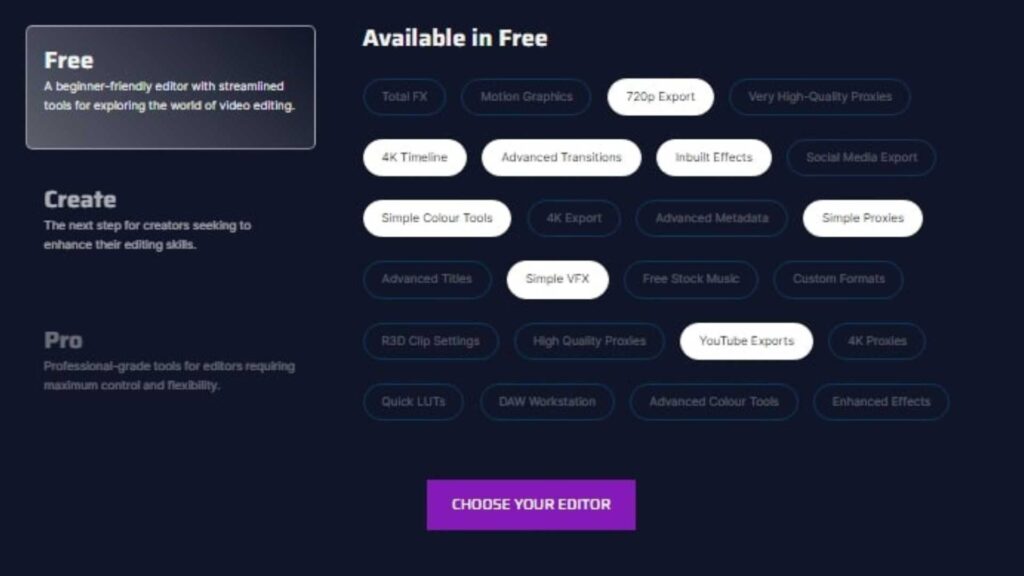

Usability
Easy to use
Tool Level
Beginners/Intermediate/Advanced
Pro Tip: According to Attrock guide, the best video maker can offer training resources for non-technical users. This is particularly designed for video marketers who have no high skills in video creation and editing.
Choosing the Best YouTube Video Editing Software
Getting the best YouTube video editing software shouldn’t cost a fortune.
Platforms like Shotcut and Lightworks offer free tools for both beginners and expert editors.
However, if your YouTube channel is already monetized and you’re willing to spend money on a super-advanced tool, Premiere Pro will be ideal.
Lastly, if you’re ready to level up your video editing game, try Movavi today. You’ll save money while accessing advanced editing features.



















